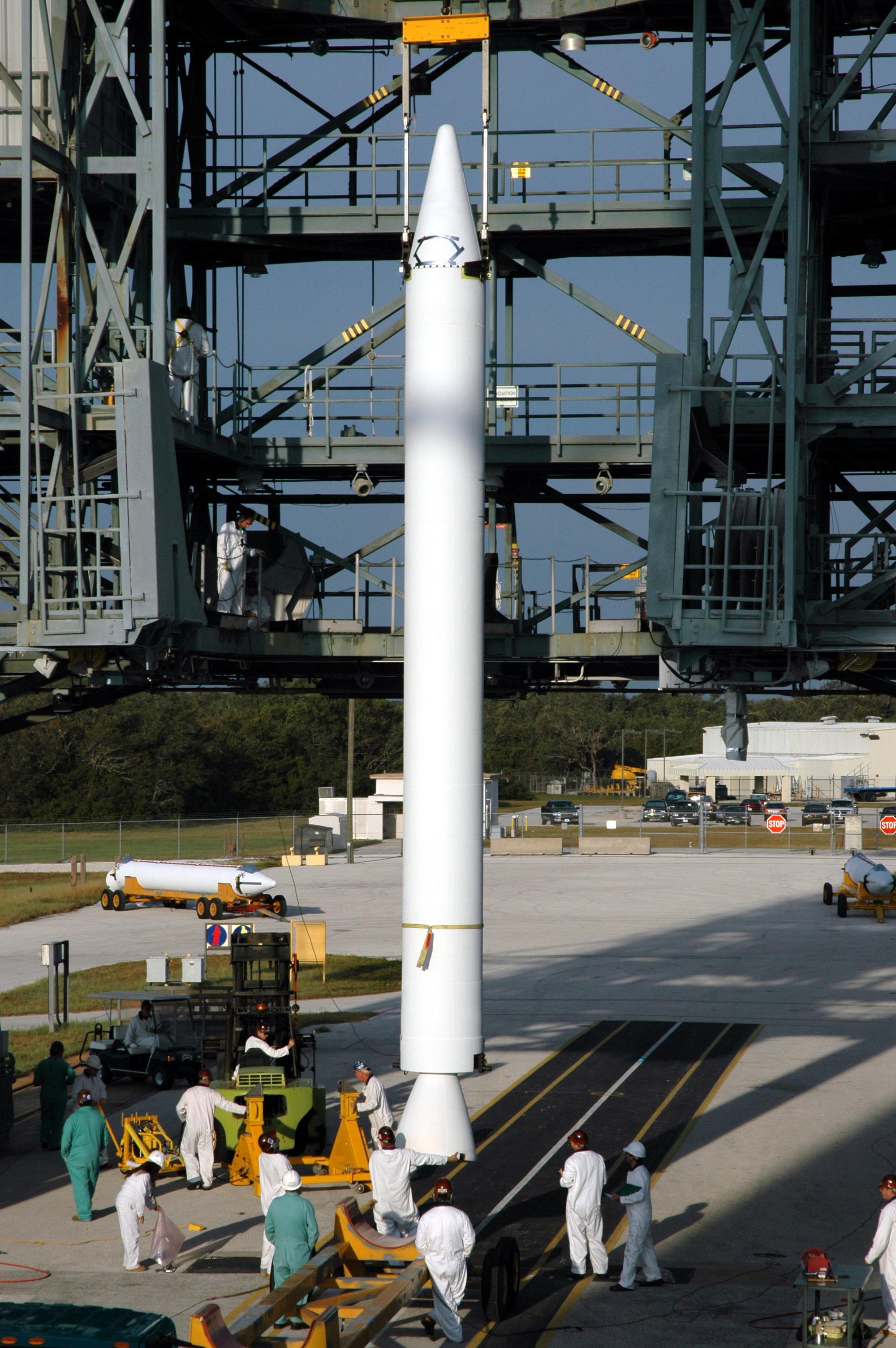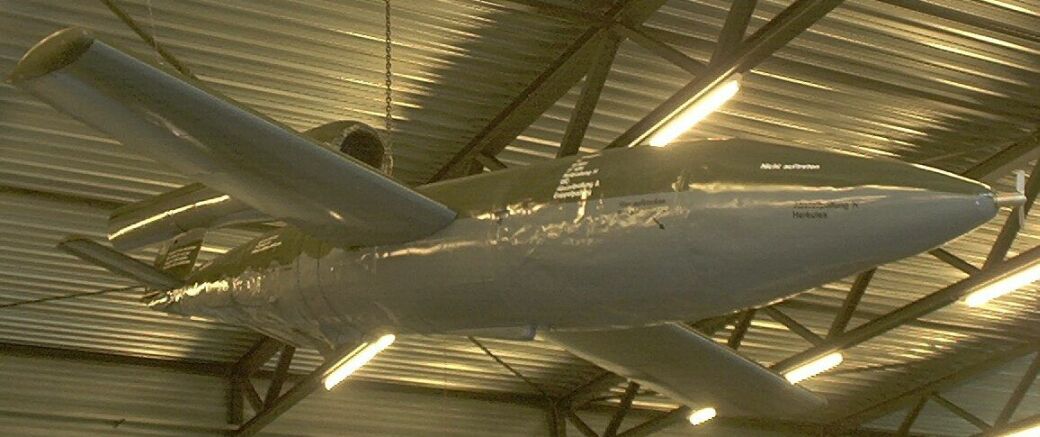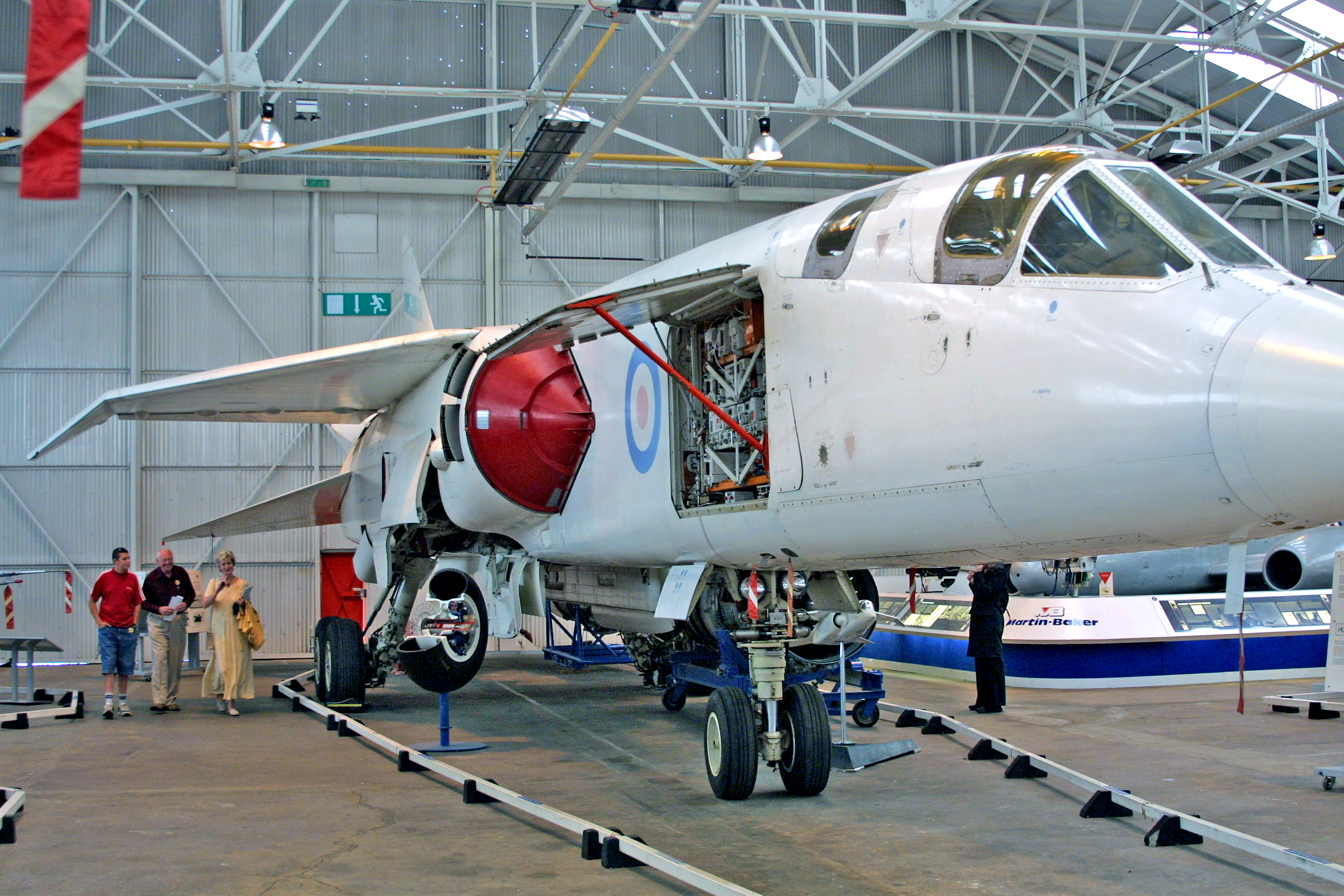|
Ground-launched Cruise Missile
The Ground Launched Cruise Missile, or GLCM, (officially designated BGM-109G Gryphon) was a ground-launched cruise missile developed by the United States Air Force in the last decade of the Cold War and disarmed under the INF Treaty. Overview The BGM-109G was developed as a counter to the mobile MRBM and IRBM nuclear missiles ( SS-20 Saber) deployed by the Soviet Union in Eastern Bloc European countries. The GLCM and the U.S. Army's Pershing II may have been the incentives that fostered Soviet willingness to sign the Intermediate-Range Nuclear Forces Treaty (INF treaty), and thus possibly reduced the threat of nuclear wars in Europe. GLCM is also a generic term for any ground-launched cruise missile. Since the U.S. deployed only one modern cruise missile in the tactical role, the GLCM name stuck. The GLCM was built by General Dynamics. History Design and employment A conventionally configured cruise missile, the BGM-109 was essentially a small, pilotless flying machine, powere ... [...More Info...] [...Related Items...] OR: [Wikipedia] [Google] [Baidu] |
Cruise Missile
A cruise missile is a guided missile used against terrestrial or naval targets that remains in the atmosphere and flies the major portion of its flight path at approximately constant speed. Cruise missiles are designed to deliver a large warhead over long distances with high precision. Modern cruise missiles are capable of travelling at high subsonic, supersonic, or hypersonic speeds, are self-navigating, and are able to fly on a non-ballistic, extremely low-altitude trajectory. History The idea of an "aerial torpedo" was shown in the British 1909 film ''The Airship Destroyer'' in which flying torpedoes controlled wirelessly are used to bring down airships bombing London. In 1916, the American aviator Lawrence Sperry built and patented an "aerial torpedo", the Hewitt-Sperry Automatic Airplane, a small biplane carrying a TNT charge, a Sperry autopilot and a barometric altitude control. Inspired by the experiments, the United States Army developed a similar flying bomb cal ... [...More Info...] [...Related Items...] OR: [Wikipedia] [Google] [Baidu] |
Warsaw Pact
The Warsaw Pact (WP) or Treaty of Warsaw, formally the Treaty of Friendship, Cooperation and Mutual Assistance, was a collective defense treaty signed in Warsaw, Poland, between the Soviet Union and seven other Eastern Bloc socialist republics of Central and Eastern Europe in May 1955, during the Cold War. The term "Warsaw Pact" commonly refers to both the treaty itself and its resultant defensive alliance, the Warsaw Treaty Organization (WTO). The Warsaw Pact was the military complement to the Council for Mutual Economic Assistance (Comecon), the regional economic organization for the socialist states of Central and Eastern Europe. The Warsaw Pact was created in reaction to the integration of West Germany into the North Atlantic Treaty Organization (NATO)"In reaction to West Germany's NATO accession, the Soviet Union and its Eastern European client states formed the Warsaw Pact in 1955." Citation from: in 1955 as per the London and Paris Conferences of 1954.The Warsaw Pact R ... [...More Info...] [...Related Items...] OR: [Wikipedia] [Google] [Baidu] |
Booster (rocketry)
A booster rocket (or engine) is either the first stage of a multistage launch vehicle, or else a shorter-burning rocket used in parallel with longer-burning sustainer rockets to augment the space vehicle's takeoff thrust and payload capability. Boosters are traditionally necessary to launch spacecraft into low Earth orbit (absent a single-stage-to-orbit design), and are especially important for a space vehicle to go beyond Earth orbit. The booster is dropped to fall back to Earth once its fuel is expended, a point known as ''booster engine cut-off'' (BECO). Following booster separation, the rest of the launch vehicle continues flight with its core or upper-stage engines. The booster may be recovered, refurbished and reused, as was the case of the steel casings used for the Space Shuttle Solid Rocket Boosters. Drop-away engines The SM-65 Atlas rocket used three engines, one of which was fixed to the fuel tank, and two of which were mounted on a skirt which dropped away at BECO ... [...More Info...] [...Related Items...] OR: [Wikipedia] [Google] [Baidu] |
Speed Of Sound
The speed of sound is the distance travelled per unit of time by a sound wave as it propagates through an elastic medium. At , the speed of sound in air is about , or one kilometre in or one mile in . It depends strongly on temperature as well as the medium through which a sound wave is propagating. At , the speed of sound in air is about . The speed of sound in an ideal gas depends only on its temperature and composition. The speed has a weak dependence on frequency and pressure in ordinary air, deviating slightly from ideal behavior. (In colloquial speech, ''speed of sound'' refers to the speed of sound waves in air. However, the speed of sound varies from substance to substance: typically, sound travels most slowly in gases, faster in liquids, and fastest in solids.) For example, while sound travels at in air, it travels at in water (almost 4.3 times as fast) and at in iron (almost 15 times as fast). In an exceptionally stiff material such as diamond, sound travel ... [...More Info...] [...Related Items...] OR: [Wikipedia] [Google] [Baidu] |
Cruise Missiles
A cruise missile is a guided missile used against terrestrial or naval targets that remains in the atmosphere and flies the major portion of its flight path at approximately constant speed. Cruise missiles are designed to deliver a large warhead over long distances with high precision. Modern cruise missiles are capable of travelling at high subsonic, supersonic, or hypersonic speeds, are self-navigating, and are able to fly on a non-ballistic, extremely low-altitude trajectory. History The idea of an "aerial torpedo" was shown in the British 1909 film ''The Airship Destroyer'' in which flying torpedoes controlled wirelessly are used to bring down airships bombing London. In 1916, the American aviator Lawrence Sperry built and patented an "aerial torpedo", the Hewitt-Sperry Automatic Airplane, a small biplane carrying a TNT charge, a Sperry autopilot and a barometric altitude control. Inspired by the experiments, the United States Army developed a similar flying bomb called th ... [...More Info...] [...Related Items...] OR: [Wikipedia] [Google] [Baidu] |
W80 (nuclear Warhead)
The W80 is a low to intermediate yield two-stage thermonuclear warhead deployed by the U.S. Enduring Stockpile, enduring stockpile with a variable yield ("dial-a-yield") of . It was designed for deployment on cruise missiles and is the warhead used in all nuclear-armed AGM-86, ALCM and AGM-129 ACM, ACM missiles deployed by the US Air Force, and in the US Navy's BGM-109 Tomahawk. It is essentially a modification of the widely deployed B61 nuclear bomb, B61 weapon, which forms the basis of most of the current US stockpile (military), stockpile of nuclear gravity bombs. The very similar W84 warhead was deployed on the retired BGM-109G Ground Launched Cruise Missile. Dimensions The W80 is physically quite small: the physics package itself is about the size of a conventional Mark 81 bomb, Mk.81 bomb, in diameter and long, and only slightly heavier at about . History Early development The Los Alamos National Laboratory began development on the W80 in June 1976, with the brief of ... [...More Info...] [...Related Items...] OR: [Wikipedia] [Google] [Baidu] |
Variable Yield
Variable yield, or dial-a-yield, is an option available on most modern nuclear weapons. It allows the operator to specify a weapon's yield, or explosive power, allowing a single design to be used in different situations. For example, the Mod-10 B61 bomb had selectable explosive yields of 0.3, 5, 10 or 80 kilotons, depending on how the ground crew set a dial inside the casing when it was loaded onto an aircraft. Variable yield technology has existed since at least the late 1950s. Examples of variable yield weapons include the B61 nuclear bomb family, B83, B43, W80, W85, and WE177A warheads. Most modern nuclear weapons are Teller–Ulam design type thermonuclear weapons, with a fission ''primary'' stage and a fusion ''secondary stage'' which is collapsed by the energy from the primary. These offer at least three methods to vary yield: * Varying primary yield by boosting with fusion, using small amounts of deuterium / tritium (DT) gas inside the primary fission bomb to inc ... [...More Info...] [...Related Items...] OR: [Wikipedia] [Google] [Baidu] |
Thermonuclear Weapon
A thermonuclear weapon, fusion weapon or hydrogen bomb (H bomb) is a second-generation nuclear weapon design. Its greater sophistication affords it vastly greater destructive power than first-generation nuclear bombs, a more compact size, a lower mass, or a combination of these benefits. Characteristics of nuclear fusion reactions make possible the use of non-fissile depleted uranium as the weapon's main fuel, thus allowing more efficient use of scarce fissile material such as uranium-235 () or plutonium-239 (). The first full-scale thermonuclear test was carried out by the United States in 1952; the concept has since been employed by most of the world's nuclear powers in the design of their weapons. Modern fusion weapons consist essentially of two main components: a nuclear fission primary stage (fueled by or ) and a separate nuclear fusion secondary stage containing thermonuclear fuel: the heavy hydrogen isotopes deuterium and tritium, or in modern weapons lithium deuteride ... [...More Info...] [...Related Items...] OR: [Wikipedia] [Google] [Baidu] |
BGM-109 Tomahawk
The Tomahawk () Land Attack Missile (TLAM) is a long-range, all-weather, jet-powered, subsonic cruise missile that is primarily used by the United States Navy and Royal Navy in ship and submarine-based land-attack operations. Under contract from the U.S. Navy, the Tomahawk was designed at the APL/ JHU in a project led by James Walker near Laurel, Maryland, and was first manufactured by General Dynamics in the 1970s. It was intended to fill the role of a medium- to long-range, low-altitude missile that could be launched from a naval surface warfare platform, and featured a modular design accommodating a wide variety of warhead, guidance, and range capabilities. At least six variants and multiple upgraded versions of the TLAM have been added since the original design was introduced, including air-, sub-, and ground-launched variants with conventional and nuclear armaments. In 1992–1994, McDonnell Douglas Corporation was the sole supplier of Tomahawk Missiles and produced Bloc ... [...More Info...] [...Related Items...] OR: [Wikipedia] [Google] [Baidu] |
Terrain Hugging
Terrain-following radar (TFR) is a military aerospace technology that allows a very-low-flying aircraft to automatically maintain a relatively constant altitude above ground level and therefore make detection by enemy radar more difficult. It is sometimes referred to as ''ground hugging'' or ''terrain hugging'' flight. The term ''nap-of-the-earth'' flight may also apply but is more commonly used in relation to low-flying military helicopters, which typically do not use terrain-following radar. TFR systems work by scanning a radar beam vertically in front of the aircraft and comparing the range and angle of the radar reflections to a pre-computed ideal manoeuvring curve. By comparing the distance between the terrain and the ideal curve, the system calculates a manoeuvre that will make the aircraft clear the terrain by a pre-selected distance, often on the order of . Using TFR allows an aircraft to automatically follow terrain at very low levels and high speeds. Terrain-following r ... [...More Info...] [...Related Items...] OR: [Wikipedia] [Google] [Baidu] |
Ballistic Missile
A ballistic missile is a type of missile that uses projectile motion to deliver warheads on a target. These weapons are guided only during relatively brief periods—most of the flight is unpowered. Short-range ballistic missiles stay within the Earth's atmosphere, while intercontinental ballistic missiles (ICBMs) are launched on a sub-orbital flight. These weapons are in a distinct category from cruise missiles, which are aerodynamically guided in powered flight. Unlike cruise missiles, which are restricted to the atmosphere, it is advantageous for ballistic missiles to avoid the denser parts of the atmosphere and they may travel above the atmosphere into outer space. History The earliest form of ballistic missile dates from the 13th century with its use derived from the history of rockets. In the 14th century, the Ming Chinese navy used an early form of a ballistic missile weapon called the Huolongchushui in naval battles against enemy ships.Needham, Volume 5, Part 7, ... [...More Info...] [...Related Items...] OR: [Wikipedia] [Google] [Baidu] |




_-_filtered.jpg)


